#Georgia Sea Islands
Explore tagged Tumblr posts
Text
Black Residents Of Gullah-Geechee Enclave In Georgia Angered After Zoning Changes Pose Threat To Their Community
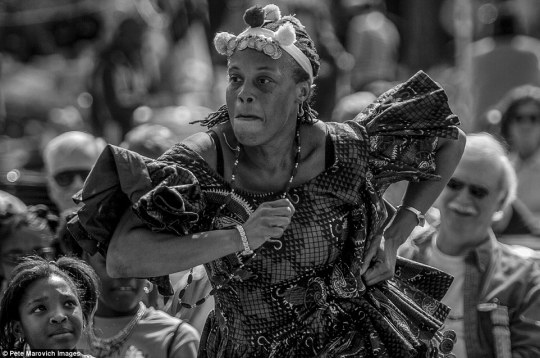
This small enclave is home to a majority of Black residents who are members of the Hogg Hummock community, which is also sometimes referred to as Hog Hammock. According to The Cultural Landscape Foundation, “Hog Hammock was one of fifteen African American Saltwater Geechee settlements on Sapelo Island, Georgia.
The Geechee are descendants of enslaved West Africans brought to work on Sea Island plantations along the Atlantic coast.” Sapelo island is located approximately 60 miles south of Savannah, Georgia and is only reachable by boat.
Almost three decades ago, the county adopted the zoning restrictions, “with the stated intent to help Hogg Hummock’s 30 to 50 residents hold on to their land,” the Associated Press reports.
But the McIntosh County’s elected commissioners recently voted 3-2 vote to change the restrictions. Now, Black residents fear that wealthy buyers will be prioritized over them, which could lead to increases in taxes.
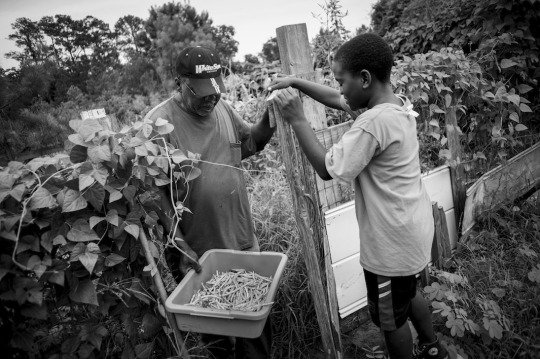
Residents also anticipate this could cause them to be pressured to sell their land, most of which has been in their family for generations. Atlanta resident Yolanda Grovner originally had a plan where she would ultimately retire on her island native father’s land that he owns in Hogg Hummock, but now she worries this might not be able to happen. Yolanda’s father George Grovner attended the meeting wearing a sticker, which read “Keep Sapelo Geechee,” in defiance of these planned zoning changes.

“It’s going to be very, very difficult,” said Yolanda, continuing, “I think this is their way of pushing residents off the island.”
In recent years, the population on Hogg Hummock has been shrinking because some families have sold their land to outsiders. David Stevens, Chairman of the Commission, said he’s been a visitor on Sapelo Island since the 1980s, and places the blame for these changes on those who are selling their land.
This could be partly true, as the vote followed new construction builds. The commissioners ruling “raised the maximum size of a home in Hogg Hummock to 3,000 square feet (278 square meters) of total enclosed space. The previous limit was 1,400 square feet (130 square meters) of heated and air-conditioned space,” per the Associated Press.
Stevens stated, “I don’t need anybody to lecture me on the culture of Sapelo Island.” “If you don’t want these outsiders, if you don’t want these new homes being built...don’t sell your land,” Stevens concluded.
But the remaining residents have vowed to keep fighting these ordinance changes, and it’s not a new phenomenon for them to fight with the local government either. In 2012, dozens of residents and landowners were able to successfully appeal property tax increases.
In addition, many have spent years “fighting the county in federal court for basic services such as firefighting equipment and trash collection before county officials settled last year,” writes the Associated Press.
Maurice Bailey is a native of Hogg Hummock whose mother Cornelia Bailey had deep roots to the island. Bailey was a Sapelo Island celebrity, keeping the community’s voice alive with her storytelling before she died in 2017. Maurice said, “We’re still fighting all the time,” adding, “They’re not going to stop. The people moving in don’t respect us as people. They love our food, they love our culture. But they don’t love us.”
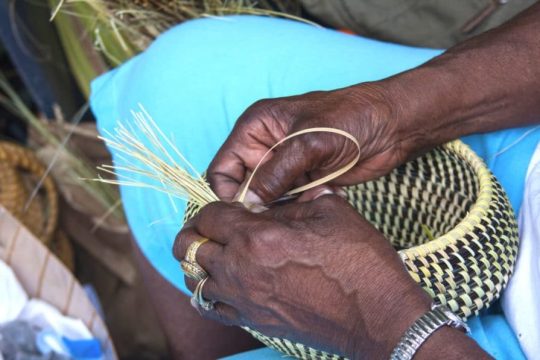
Some legal experts have hinted at due process violations as well as concerns about encroachment under the equal protection clause.
This issue becomes more complicated given the racial demographics of the county. Hogg Hummock is on the National Register of Historic Places, and in order for the Gullah-Geechee community to receive protections “to preserve the community, residents depend on the local government in McIntosh County, where 65% of the 11,100 residents are white,” says the Associated Press.
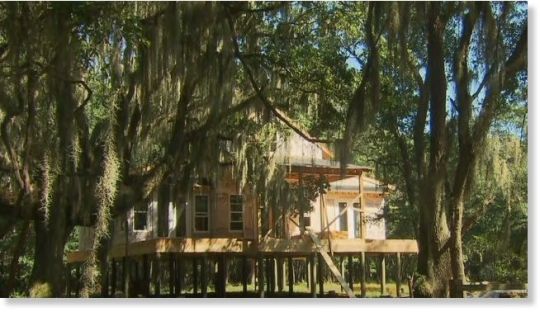
#Black Residents Of Gullah-Geechee Enclave In Georgia Angered After Zoning Changes Pose Threat To Their Community#sapelo#georgia sea islands#Gullah Geechee#Lowlands#Hogg Hummock#Sapelo Island#Gullah Geechee community
33 notes
·
View notes
Text


some photos from the ferry
#west coast#vancouver island#yyj#yyjphotographer#bc#nature#victoria bc#ocean#vancouver#Tsawwassen#sun spots#horizon#sea#island#georgia strait#bc ferries#british columbia#explore bc#pnwexplored#pnwonderland#pnw aesthetic#oceancore
372 notes
·
View notes
Text
They need your help!!!


Every day, tons of people die due to the ongoing genocide in Palestine! Please help them as much as you can!
#splatoon abxy#ballon d'or#the amazing digital circus#diy#education#fiction#georgia#halloween#ice cream#percy jackson#kirby#lemonade#the mandela catalogue#new music#optimus prime#pupyrus#queen#rhode island#sea#tuvalu#Uraguay#vintage#wix#xmas#yupoo#zimbabwe
7 notes
·
View notes
Text





Photos from my travels in the Deep South
#deep south#savannah#georgia#southern aesthetic#south carolina#tennessee#digital photography#my photgraphy#art school#smokey mountains#mountain people#photography of tumblr#photographers on tumblr#cloudy days#sea foam#tybee island#cow skull#antique#abandoned buildings#nature#one with nature#nature hikes#mountain photography#appalachian#rural core
3 notes
·
View notes
Text
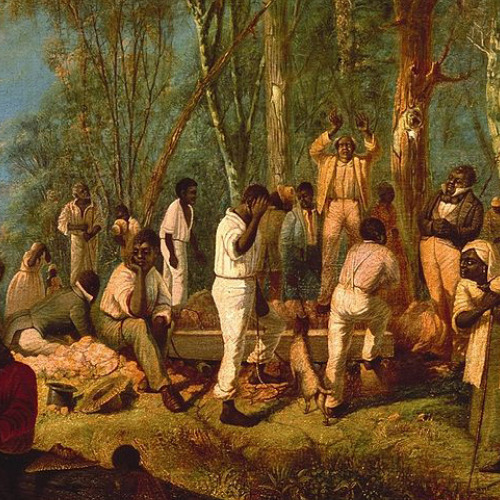
A story from a former slave, Mary Middleton, a Gullah woman from the South Carolina Sea Islands, told of an incident of a slaveholder who was physically weakened from conjure. A slaveholder beat one his slaves badly. The slave he beat went to a conjurer and the conjurer made the slaveholder weak by sunset. Middleton said, "As soon as the sun was down, he was down too, he down yet. De witch done dat." Bishop Jamison was born enslaved in Georgia in 1848 and wrote an autobiographical account of his life. On a plantation in Georgia there was an enslaved Hoodoo man named Uncle Charles Hall who prescribed herbs and charms for slaves to protect themselves from European people.

Hall instructed the slaves to anoint roots three times daily and chew and spit roots towards their enslavers for their protection. Another slave story talked about an enslaved woman named Old Julie who was a conjure woman and was known among the slaves on the plantation to conjure death. Old Julie conjured so much death, her slaveholder sold her away to stop her from killing people on the plantation with conjure. Her enslaver put her on a steamboat to take her to her new slaveholder in the Deep South. According to the stories of freedmen after the Civil War, Old Julie used her conjure powers to turn the steamboat around back to where the boat was docked, which forced her slaveholder who tried to sell her away to keep her.

#african#afrakan#kemetic dreams#africans#brownskin#afrakans#brown skin#african culture#afrakan spirituality#gullah geechee#gullah gullah island#mary middleton#civil war#old julie#deep south#freedman#south carolina island#sea islands#georgia
14 notes
·
View notes
Text

Carrie Mae Weems, Untitled (Sea Island Series) Plate 15, 1991-92.
4 notes
·
View notes
Text
I really need to listen to some more Gullah-Geechee music
2 notes
·
View notes
Text
youtube
#Luxury Resort in Saint Simons Island#homes for sale in south carolina#new homes for sale#sea island golf#the lodge at sea island#the cloister at sea island#homes for sale in bluffton#hilton head real estate#sun city hilton head#bluffton sc real estate#buyers real estate agent#bluffton gated communities#new homes for sale in georgia#bluffton Real Estate#Exploring Sea Island#John Weber#st simon island#Saint Simons Island Georiga#georgia#homes for sale#Youtube
0 notes
Text







The residence of William Frank McCall, Jr. also known as “The Hedges” in Sea Island, Georgia, 1976.
#Frank McCall#architecture#70s#interior#interiors#interior design#sea island#beach house#home#the hedges#georgia
0 notes
Text
Sea Island Georgia
On the southeastern coast of the Atlantic Ocean, there is a glamorous and luxurious Georgian seaside resort called Sea Island. With world-renowned accommodation and chefs, not to mention the beach club, spa and 3 golf courses, a trip to the island is sure to be colorful and relaxing. But with its many activities for kids, it’s also an ideal year-round family destination. The only resort in the…

View On WordPress
0 notes
Text
The Gullah and Geechee culture on the Sea Islands of Georgia has retained ethnic traditions from West Africa since the mid-1700s. Although the islands along the southeastern U.S. coast harbor the same collective of West Africans, the name Gullah has come to be the accepted name of the islanders in South Carolina, while Geechee refers to the islanders of Georgia. Modern-day researchers designate the region stretching from Sandy Island, South Carolina, to Amelia Island, Florida, as the Gullah Coast—the locale of the culture that built some of the richest plantations in the South.
Many traditions of the Gullah and Geechee culture were passed from one generation to the next through language, agriculture, and spirituality. The culture has been linked to specific West African ethnic groups who were enslaved on island plantations to grow rice, indigo, and cotton starting in 1750, when antislavery laws ended in the Georgia colony.
Enslavement
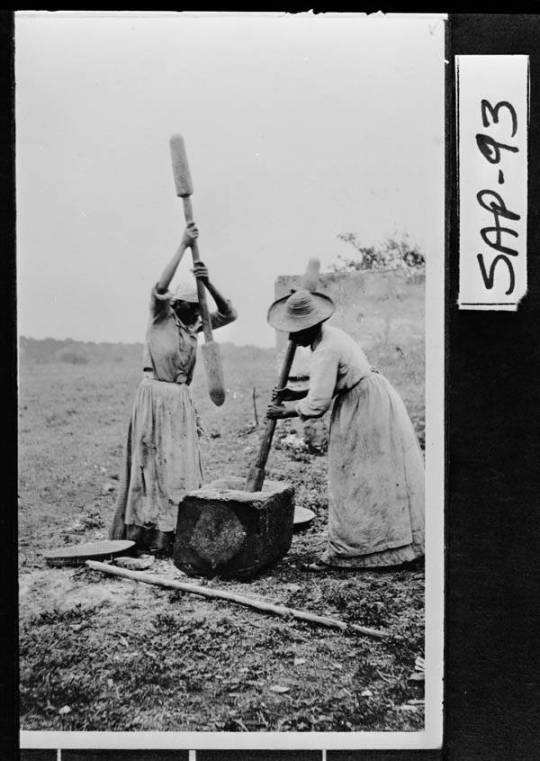
Courtesy of Georgia Archives.
Rice plantations fostered Georgia’s successful economic competition with other slave-based rice economies along the Eastern Seaboard. Coastal plantations invested primarily in rice, and plantation owners sought out Africans from the Windward Coast of West Africa (Senegambia [later Senegal and the Gambia], Sierra Leone, and Liberia), where rice, indigo, and cotton were indigenous to the region. Over the ensuing centuries, the isolation of the rice-growing ethnic groups, who re-created their native cultures and traditions on the coastal Sea Islands, led to the formation of an identity recognized as Geechee/Gullah.
There is no single West African contribution to Geechee/Gullah culture, although dominant cultural patterns often correspond to various agricultural investments. For example, Africa’s Windward Coast was later commonly referred to as the Rice Coast in recognition of the large numbers of Africans enslaved from that area who worked on rice plantations in America.
Language

Photograph by WIDTTF
Gullah is thought to be a shortened form of Angola, the name of the group first imported to the Carolinas during the early colonial period. Geechee, historically considered a negative word identifying Sea Islanders, became an acceptable term in light of contemporary evidence linking it to West Africa. Although the origins of the two words are not definitive, some enslaved Africans along the coast had names that were linked to the Kissi group, leading to speculation that the terms may also derive from that particular culture.
Linguist Lorenzo Dow Turner researched and documented spoken words on the coast during the 1930s, traced similarities to ethnic groups in West Africa, then published the Gullah dialect lexicon, Africanisms in the Gullah Dialect (1949). His research confirms the evolution of a new language based on West African influences and English. Many words in the coastal culture could be matched to ethnic groups in West Africa, thereby linking the Geechee/Gullah people to their origins. Margaret Washington Creel in A Peculiar People: Slave Religion and Community-Culture among the Gullahs (1988) identifies cultural and spiritual habits that relate to similar ethnic groups of West Africans who are linked by language. Her research on the coastal culture complements Turner’s findings that Africans on the Sea Islands created a new identity despite the tragic conditions of slavery.
Cultural Heritage
Documentation of the developing culture on the Georgia islands dates to the nineteenth century. By the late twentieth century, researchers and scholars had confirmed a distinctive group and identified specific commonalities with locations in West Africa. The rice growers’ cultural retention has been studied through language, cultural habits, and spirituality. The research of Mary A. Twining and Keith E. Baird in Sea Island Roots: African Presence in the Carolinas and Georgia (1991) investigates the common links of islanders to specific West African ethnicities.
The enslaved rice growers from West Africa brought with them knowledge of how to make tools needed for rice harvesting, including fanner baskets for winnowing rice. The sweetgrass baskets found on the coastal islands were made in the same styles as baskets found in the rice culture of West Africa. Sweetgrass baskets also were used for carrying laundry and storing food or firewood. Few present-day members of the Geechee/Gullah culture remember how to select palmetto, sweetgrass, and pine straw to create baskets, and the remaining weavers now make baskets as decorative art, primarily for tourists.
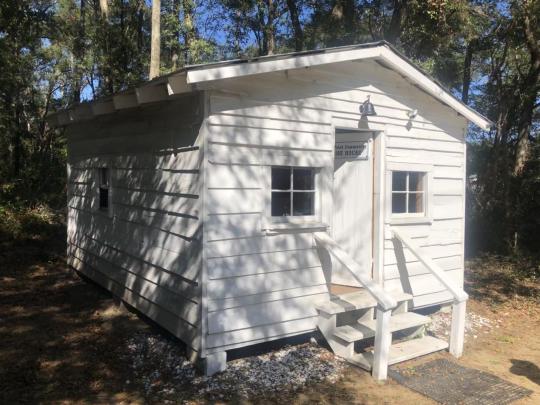
Image from Richard N Horne
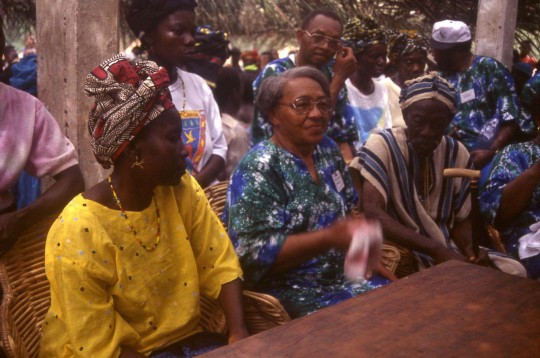
Photograph by Sharon Maybarduk
In 1997 the two women met in the African village to share and reenact what was understood as a Mende funeral song, sung only by the women of Jabati’s family lineage, who conducted the funerals of the village. Evidence suggests that a female member of Moran’s family had been forced into captivity from the village nearly 200 years before. The return of the song and the visit from the Moran family led to a countrywide celebration that can be viewed in the documentary The Language You Cry In (1998). The discovery of the song and subsequent linguistic research confirmed yet another link between the cultures of West Africa and the Georgia coast.
Such corresponding practices as similar names, language structures, folktales, kinship patterns, and spiritual transference are but a few areas that suggest a particular link between the southeastern coastal culture of the United States and Sierra Leone in West Africa.
Migration
Thousands of enslaved laborers from Georgia and South Carolina who remained loyal to the British at the end of the American Revolution (1775-83) found safe haven in Nova Scotia in Canada and thus gained their freedom. Many returned to Sierra Leone in 1791 and the following year established Freetown, the capital city. Members of that group are identified today as Krio.
Fugitives from slavery were also harbored under Spanish protection in Florida prior to the Second Seminole War (1835-42). Native American refugees from around the South formed an alliance with self-emancipated Africans to create the Seminole Nation. The name Seminole is from the Spanish word cimarrón, meaning runaway. The 1842 agreement between the United States and Spain, which ended the Seminole hold on Florida, caused a migration to Indian Territory (present-day Oklahoma). Some Seminoles followed Spanish protectors to Cuba and to Andros Island in the Bahamas.
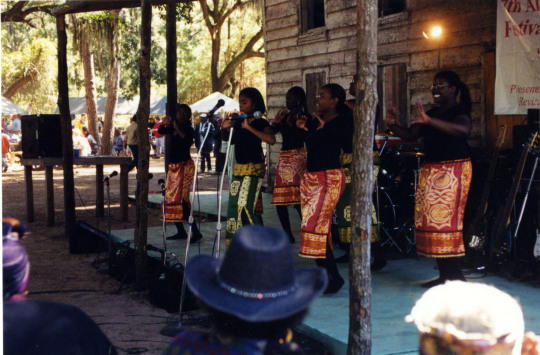
Photograph by Jennifer Cruse Sanders
During the 1900s, land on some of the islands—Cumberland, Jekyll, Ossabaw, Sapelo, and St. Simons —became resort locations and reserves for natural resources. The modern-day conflict over resort development on the islands presents yet another survival test for the Geechee/Gullah culture, the most intact West African culture in the United States. Efforts to educate the public by surviving members of the Geechee/Gullah community, including Cornelia Bailey of Sapelo Island and the Georgia Sea Island Singers, help to maintain and protect the culture’s unique heritage in the face of such challenges.
95 notes
·
View notes
Text
Love Island (one shot) – sneak peek
Harry’s arrival on Love Island stirs Y/N’s feelings, sparking tension with her partner, Tom, and the rest of the ladies, as she’s drawn to Harry’s charm and intrigue.


Author's note: Hello everyone! Here is the concept of the new one shot that has been posted on my Patreon. I hope you enjoy the sneak peek. Let me know what you think!
The italics is the narrator just like in LOVE ISLAND!
check out my patreon (starting at $2) and get full access to the rest of the chapters, various one shots and much more :)

Tom’s lips tightened, and he gave a small nod. “Fair enough. I can’t stop you from seeing where things go. I mean, you’re right—it is early days. Just… give me a heads-up if you start to feel like it’s going somewhere else, yeah?”
“Of course,” she assured him, offering him a warm smile. “I’ll always be honest with you, Tom. That’s a promise.”
He smiled, though it looked a bit forced, then let out a sigh, looking back towards the villa. “Right then. Just have to up my game a bit, won’t I?”
Y/N chuckled, nudging him. “You’ve got nothing to worry about. Just keep being you.”
But will that be enough, Tom? With Harry’s arrival in the villa, we might just see if Tom can hold his own—or if his steady confidence starts to crack.
After Tom walked off, Y/N settled back into her lounger, taking a slow sip of her coffee. The warmth of the morning sun was comforting, and she let herself enjoy the peace, though her mind kept drifting to Harry.
Across the patio, Harry was surrounded by a small group of girls, each one caught up in his easy charm. There was Georgia, always the first to get a word in; her dark hair bounced as she laughed at one of his jokes, flashing him a look that said she was more than intrigued. Beside her was Chloe, who toyed with her braid as she angled closer, her gaze fixed on him, and Lila, who had barely left his side since his arrival. They all hung on his every word, their laughter blending with his deep chuckles.
Y/N watched him, noticing the way he seemed effortlessly at ease, making each of the girls feel like they were the only ones there. He was charming, no doubt, and that little smirk of his told her he knew exactly what he was doing. There was something magnetic about him; he was the kind of person you couldn’t help but notice.
Then, as if sensing her gaze, Harry’s eyes lifted, meeting hers across the patio. The moment their eyes connected, a playful glint flickered in his. His smile softened, turning into that cheeky grin she was beginning to recognize. He said something to the girls that made them all laugh again, and then, with a quick apology, excused himself from the group.
Y/N’s heart gave a little jump as she saw him walking towards her, the confidence in his stride obvious as he crossed the patio. When he reached her, he didn’t sit right away. Instead, he leaned forward, his arms resting on the back of her lounger, his face close enough that she could catch the faint scent of the sea on his skin.
“Morning,” he said, his voice smooth, that smirk never leaving his lips. “Didn’t expect to catch you staring.”
Y/N let out a soft laugh, raising an eyebrow. “Staring? I was just observing… thought I’d get a better sense of what all the fuss is about.”
He chuckled, settling himself on the edge of her lounger without breaking eye contact. “Ah, so you were curious, then. Good to know I’ve got your attention, even if just a little.”
“Don’t flatter yourself,” she replied, though the smile tugging at her lips betrayed her. “I was just checking to see if you were actually as charming as you think you are.”
He tilted his head, feigning contemplation. “And? What’s the verdict, then?”
She shrugged, pretending to consider it. “I think it’s too early to tell. But I’ll let you know if you manage to impress me.”
Harry leaned back, grinning. “Challenge accepted. And I’d be lying if I said I didn’t come over here to see if I could learn a bit more about you too.”
“Oh, really?” she teased, crossing her arms as she watched him. “So, the big mystery man’s got questions?”
“Maybe one or two.” His gaze softened, the playful edge giving way to a hint of sincerity. “Like, what exactly is a girl like you looking for in here?”
She held his gaze, considering her answer for a moment. “Honestly, someone genuine,” she said, her tone earnest. “It’s easy to get caught up in all the surface stuff, but I’m hoping to find something real. Something that lasts.”
He nodded slowly, his eyes never leaving hers. “Right. Thought I’d take a risk, try something new.” His voice softened, a touch of vulnerability creeping in. “Been a while since I let anyone in.”
Their eyes locked, and for a moment, the world around them seemed to fade. She felt a spark, a warmth that hadn’t been there before, and she knew he felt it too.
“Alright then, Harry the risk-taker,” she said, breaking the silence with a playful smile. “Let’s see if you’re as good as you say.”
Harry’s cheeky grin returned, the playfulness back in his eyes. “Oh, you’ve got no idea what I’m capable of, Y/N.”
Looks like Y/N’s little morning coffee break has turned into something a bit more steamy than she bargained for. With Tom on edge and Harry moving in, she may have her hands full. So, who’s in it for the long haul? Stay tuned.
#harry#harrystyles#harry imagine#harry styles imagines#harry fanfic#harry fic#harry fanfiction#harry styles imagine#harry styles fanfic#harry styles fanfiction#harry styles fic#harry blurb#harry angst#harry smut#harry one shot#harry dabble#harry trope#harry au#harry styles blurb#harry styles angst#harry styles smut#harry styles one shot#harry styles dabble#harry styles au#harry x you#harry x reader#harry x y/n#harry styles x you#harry styles x reader#harry styles x y/n
351 notes
·
View notes
Text

Today we're heading into the eternal ice of Antarctica and keeping a special lady company. The beautiful Endurance is waiting for us in door no. 7

More about her here:
The three-masted schooner barque designed by Ole Aanderud Larsen (1884-1964) was built by the Framnæs shipyard in Sandefjord, Norway. When she was launched on 17 December 1912, she was named Polaris. She was 43.8 m long, 7.62 m wide and weighed 350 tonnes. In addition to square sails on the foremast and gaff sails on the main and mizzen masts, she had a 260 kW steam engine, which allowed a maximum speed of 10 knots (19 km/h). The ship was designed for polar conditions and constructed to minimise the pressure of the ice masses. With a thickness of 28 cm, the frames were made of greenheart wood, a particularly stable type of tropical wood, and were twice as thick as on conventional sailing ships of this size. The hull of the Endurance was designed to be relatively straight-sided, as it was only intended to sail in loose pack ice. She was therefore calmer in the sea than ships with a spherical hull, such as the Fram; however, this came at the cost of not being lifted significantly out of the pressure line in ice pressures and was therefore unsuitable for encasements in pack ice.
The ship was commissioned by the Belgian polar explorer Adrien de Gerlache and the Norwegian whaling magnate Lars Christensen, who actually wanted to use it for polar cruises of a more touristic nature. However, due to financial problems, Christensen was happy to sell his ship to Shackleton for 11,600 pounds sterling (approx. 934,000 euros, as of 2010) - an amount that was less than the original construction costs. Shackleton renamed her Endurance after his family's motto ‘Fortitudine vincimus’ (‘Through endurance we shall conquer’).
The Endurance left the port of Plymouth on 8 August 1914, around a week after Great Britain's entry into the First World War, and completed the journey to Antarctica with a stopover in Buenos Aires without any problems.
Before the crew of the Endurance could cross to the Antarctic mainland to cross the Antarctic as planned, the ship was trapped by the pack ice of the Weddell Sea in January 1915 like ‘an almond in a piece of chocolate’ - as the much-used comparison goes. After resisting the force of the pack ice for 281 days, the Endurance was crushed by the ice on 21 November 1915. The expedition team had previously saved themselves on a safe ice floe. Thanks to a masterly feat of seamanship and navigation, Shackleton and his crew managed to get out of this desolate situation without any losses with the help of three lifeboats that were salvaged from the Endurance.
Initially continuing with the pack ice and later on ice floes, the castaways drifted northwards in their camps along the Antarctic Peninsula until the floes broke into small pieces. They finally reached Elephant Island in their lifeboats. There, one of the boats was converted and set off for South Georgia with 6 men to fetch help, which was successful. Months later, the remaining men who were still stuck on Elephant Island were rescued by a Chilean navy guard boat.
In 2019, a private expedition attempted to locate the wreck of the Endurance, but was unsuccessful.
In January 2022, the Endurance 22 expedition began the search. The S. A. Agulhas II brought the expedition, in which marine physicist Stefanie Arndt from the Alfred Wegener Institute took part,[3] to the last coordinates of the Endurance mentioned. From the historical records, the expedition members knew that the ship must have sunk at ♁68° 39′ 30″ S, 52° 26′ 30″ W. According to the rules of the Antarctic Treaty, the wreck is a protected historical site that may not be touched.
On 5 March 2022, the expedition found the ship with a diving robot at a depth of 3008 m, 7.7 km from the recorded position. Photographs showed the wreck standing upright in excellent condition.
#naval history#tall ship#endurance#ernest shackleton#early 20th century#antarctica#advent calendar#day 7
158 notes
·
View notes
Text
My mom wanting to help me make prompts for my blog. She has no clue what I do on my blog but is enthusiastic and wants to encourage my creativity. She’s a bit confused on what writing prompts are but she has the spirit. I need you all to let my mom know how wonderful her ideas are:
- “the pink cat screamed out loud” “the fox skipped through the orchard and came across the pink cat.”
- “The wind whipped through her hair on the top level of the ferry that took them to spookatron island”
- She looked down at the sea and saw the Georgia’s cliffs and crashing waves below her. At least a thousand feet below
- She yelled for the life preserver as the cliffs fell away from her feet.
- The undulating sea roiled against her face, flattening for decades.
- She lept over the bridge with no concern in mind, lunging to grab the flailing glove.
- Loose helmets and no goggles, plus three mopeds equals = help me in crying.
- The sky was painting in gorgeous colors but oh no! There’s something in the sky. What is it?
Also
My mother: “do you get paid for your work?”
Me: “ i mean I have a Ko-Fi? There’s legal issues with getting money from licensed products”
My mother: “You still should get paid.”
#bones prompts#behold my lovely mother. not at all really knowing what a writing prompt is#i love her dearly
411 notes
·
View notes
Text

An adult king penguin hunts for its chick amongst a sea of similar-looking 'oakum boys' (juvenile king penguins) on the Island of South Georgia in Antarctica.
By Paul Nicklen
#paul nicklen#photographer#king penguins#penguins#oakum boys#juvenile king penguins#bird#south georgia#antarctica#nature
60 notes
·
View notes
Text

Irish seaman and Antarctic explorer Thomas Crean photographed in 1915 aboard the Endurance in Antarctica during the Imperial Trans-Antarctic Expedition of 1914–1917 led by Ernest Shackleton.
The Endurance was trapped in ice for 492 days and sank, so the 28-man crew had to use lifeboats to reach the uninhabited Elephant Island. Crean was one of 6 members of the crew to make the 800 miles (1300 km) journey from Elephant Island to South Georgia in the small-boat James Caird to seek rescue for the rest of the crew. Once they reached South Georgia after 17 days at sea, 3 of the men, including Tom Crean, trekked across the island to a whaling station on the north side of South Georgia. There they were able to organize rescue efforts for the 3 men left on the south of the island and the remaining crew on Elephant Island. The entire crew of the Endurance returned home without loss of life.
Credit: polar_history_in_colour on Instagram
93 notes
·
View notes